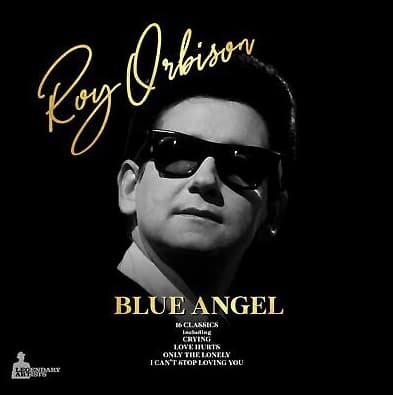
Roy Orbison’s “Blue Angel”: A Soaring Melody of Youthful Heartache
When it comes to Roy Orbison, few can match the emotional depth and haunting melodies that he consistently delivered throughout his career. Released in August 1960, “Blue Angel” was a follow-up to the international smash hit “Only the Lonely (Know the Way I Feel),” and it continued to solidify Orbison’s place in the pantheon of rock and roll legends. Peaking at number nine on the Billboard Hot 100 and reaching number eleven on the UK’s Record Retailer Top 50, “Blue Angel” was a testament to Orbison’s ability to connect with a wide audience, capturing the essence of youthful love and heartache in a way that felt both timeless and immediate.
Co-written with his frequent collaborator Joe Melson, “Blue Angel” is a song that showcases Orbison’s unique vocal abilities, particularly his signature falsetto. While “Only the Lonely” was a song drenched in sorrow and self-pity, “Blue Angel” takes a slightly different approach. The song’s melody is bright, almost deceptively so, given the themes of lost love that it explores. It’s as if the melody itself is trying to comfort the heartache it narrates, offering a silver lining to the cloud of teenage romance.
Musician and writer John Kruth described “Blue Angel” as “a dollop of commercial fluff,” acknowledging that, lyrically, it might not have been the most profound of Orbison’s offerings. However, Kruth also noted that its power lay in its simple, yet unforgettable melody—a melody that lingers long after the song has ended. This is where Orbison truly shines: his ability to take what could be considered a straightforward, even “sappy,” narrative and elevate it through sheer vocal artistry and melodic craftsmanship.
Recorded in early August 1960 at RCA Victor Studio B in Nashville, Tennessee, the song was put together with the kind of efficiency that defined the music industry at the time. The B-side, “Today’s Teardrops,” written by a then relatively unknown Gene Pitney, offered a hint of the talent that Pitney would soon display in his own right. Released by Monument Records in the US and later by London Records in the UK, “Blue Angel” hit the airwaves when “Only the Lonely” was still reigning at the top of the charts in the UK—a perfect example of how quickly the music industry could capitalize on a successful hit.
“Blue Angel” is more than just a follow-up single; it’s a reflection of the era’s emotional landscape, where young love was often portrayed as both fleeting and all-consuming. Orbison’s ability to tap into those emotions, to give voice to the joys and pains of adolescence, is what made him such an enduring figure in the world of music. Whether it’s the soaring falsetto, the catchy melody, or the bittersweet lyrics, “Blue Angel” remains a beautiful, if somewhat overlooked, gem in Orbison’s rich catalog of hits.